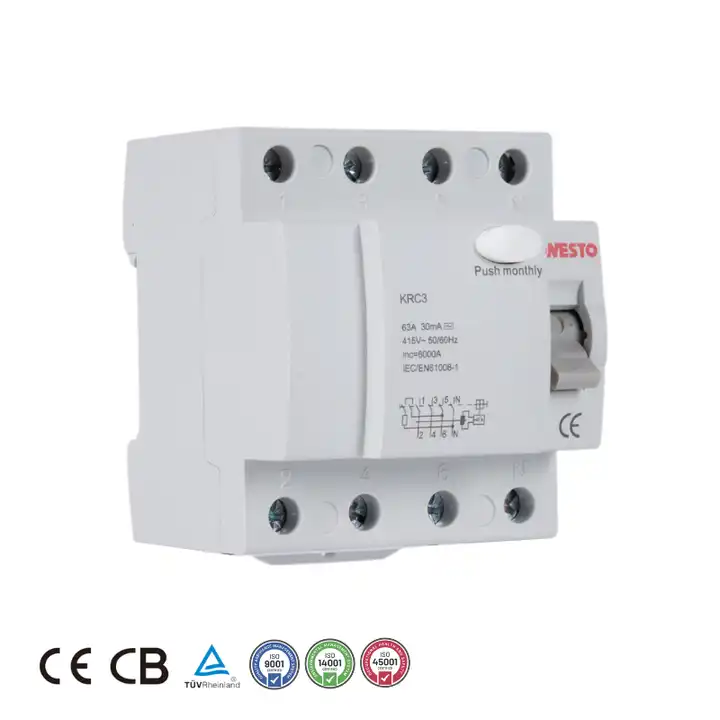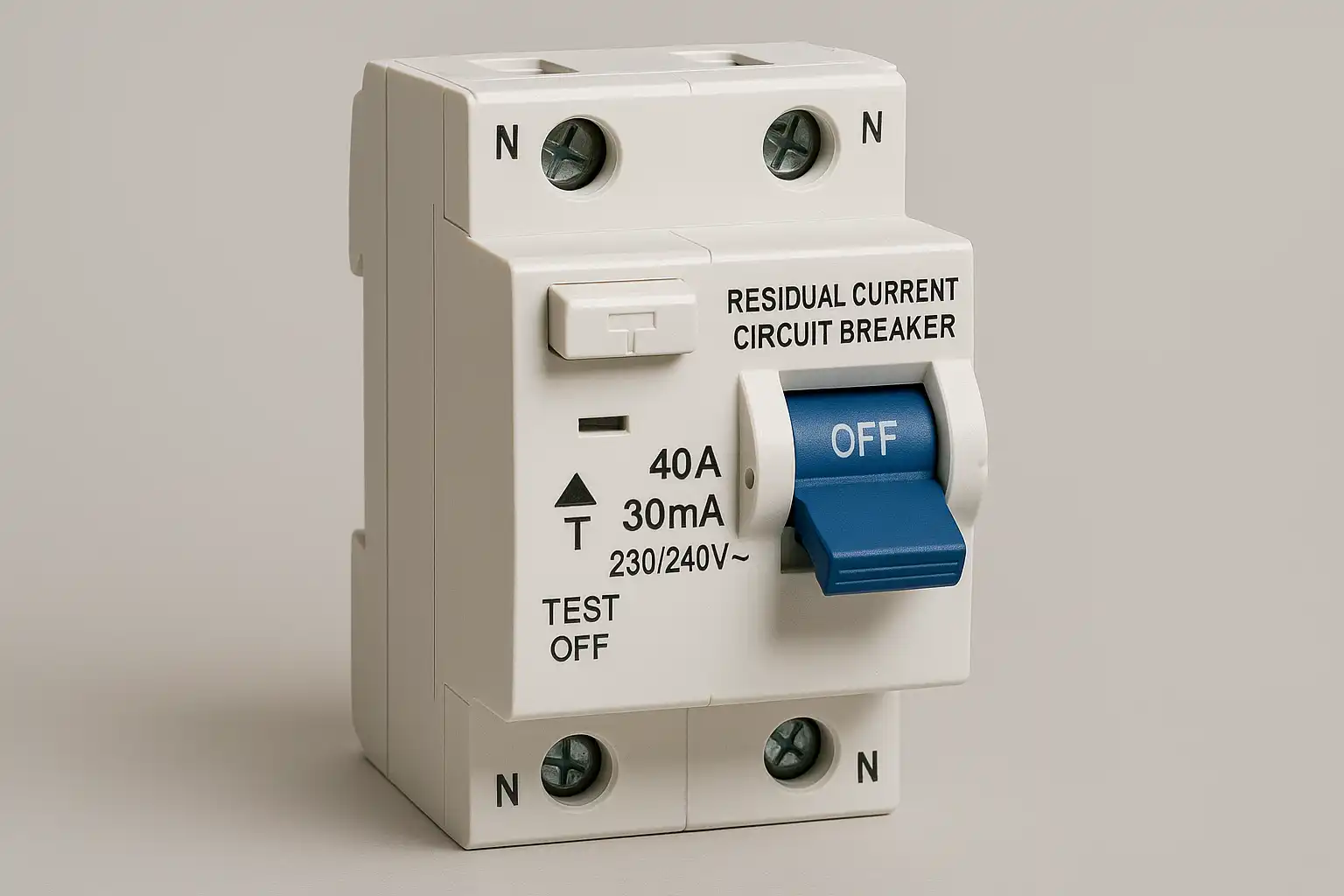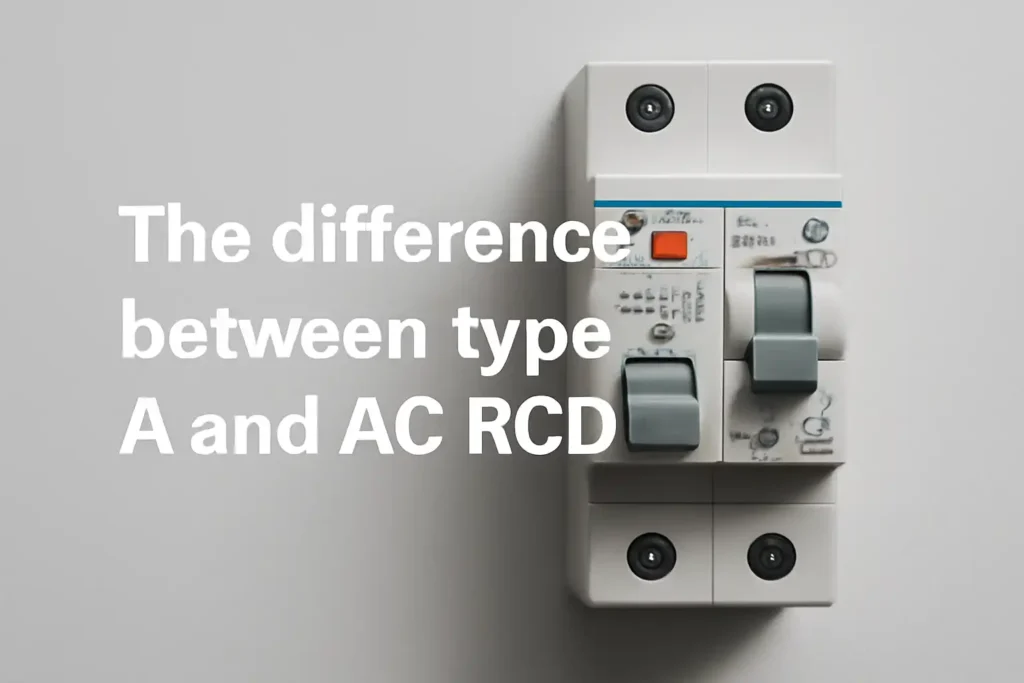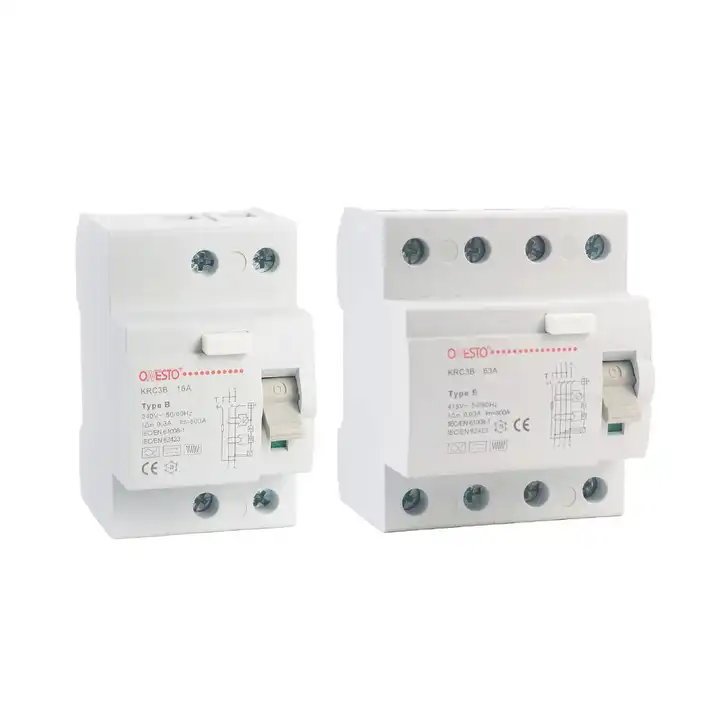Residual Current Devices (RCDs) are essential for keeping you safe from electrical hazards. Type A and communication RCDs are designed to detect both AC and pulsing DC currents, making them ideal for systems that incorporate modern electronics. In contrast, Type AC RCDs only identify AC currents. This distinction is crucial, especially as homes increasingly rely on a variety of devices. According to government reports, electricity is responsible for over 20,000 fires annually in the UK, accounting for nearly half of all house fires. Each year, around 70 people lose their lives, and 350,000 suffer serious injuries due to these incidents. Choosing the appropriate RCD, such as Type A and communication RCDs, not only enhances your safety but also ensures compliance with regulations.
Key Takeaways
- Type A RCDs find both AC and pulsing DC currents. They work well for devices like washers and electric car chargers.
- Type AC RCDs only find AC currents. This makes them less useful for systems with advanced electronics that create pulsing DC currents.
- Picking the right RCD improves safety and follows rules. It lowers the chance of shocks and fires.
- For homes with modern gadgets, Type A RCDs protect better from electrical dangers than Type AC RCDs.
- Always ask an expert when choosing an RCD. This ensures it fits your system and safety needs.
Overview of RCDs

What is an RCD?
An RCD is a device that keeps you safe from electricity. It checks the flow of electricity in a circuit and spots problems. These problems happen when electricity leaks to the ground. This can occur if someone touches a live wire or if wires are damaged.
RCDs compare electricity in two wires: phase and neutral. If the electricity doesn’t match, the RCD finds the problem and cuts off power fast. This quick action stops shocks or fires.
Main parts of an RCD include:
- Phase coil and neutral coil: These check the electricity in the wires.
- Search coil: This finds problems and starts the trip process.
- Trip mechanism: This stops electricity by opening the circuit.
RCDs use Kirchhoff’s Current Law to find small changes in electricity. They can detect tiny differences, even in milliamperes. This makes them great at stopping electrical accidents.
Why are RCDs important?
RCDs are very important for safety. They stop electric shocks when electricity flows through your body. They also lower the chance of fires caused by bad wires or devices.
Modern homes and offices use many electronic devices. These devices can create tricky electrical currents. Type A and communication RCDs are helpful here. They can find both AC and pulsing DC currents. This gives better safety for advanced electronics.
Besides safety, RCDs help follow electrical rules. Many places require RCDs in homes and workplaces to meet safety laws. By using the right RCD, you stay safe and follow the rules.
Functional differences between Type A and communication RCD
How Type A RCDs work
Type A RCDs can detect both AC and pulsing DC currents. This makes them useful for modern devices like washing machines and LED lights. They are also good for electric car chargers. These devices often create pulsing DC currents, which Type A RCDs can stop to avoid danger.
Type A RCDs work by sensing changes in current flow. If a problem happens, like a leak from damaged wires, the RCD notices the imbalance. It then shuts off the power to prevent harm. Unlike Type AC RCDs, Type A RCDs stay sensitive even with pulsing DC currents. This gives better safety.
Here’s a table to explain how Type A RCDs handle pulsing DC currents:
| RCD Type | What It Detects | Max DC Component |
|---|---|---|
| A | AC and pulsing DC currents | 6 mA |
| F | AC, pulsing DC, and mixed-frequency currents | 10 mA |
| B | AC, pulsing DC, and mixed-frequency currents | N/A |
This ability makes Type A RCDs a good choice for systems with advanced electronics.
How Type AC RCDs work
Type AC RCDs are simpler and detect only AC currents. They work well in basic systems without pulsing DC currents. For example, they are fine for regular lights or simple appliances like kettles.
When a fault happens, Type AC RCDs check the current in the wires. If they find an imbalance, they cut off the power. But if pulsing DC currents are present, Type AC RCDs may not work well. This makes them less useful for modern systems with complex currents.
Even though Type AC RCDs are common, they can’t handle pulsing DC currents. This means they might not protect you in all situations. Knowing this is important when picking the right RCD.
Key technical differences
The main difference between Type A and communication RCD and Type AC RCD is what they can detect. Type A RCDs find both AC and pulsing DC currents. Type AC RCDs only detect AC currents. This affects how well they work in different setups.
Here’s a table showing the key differences:
| RCD Type | Key Differences | Performance Details |
|---|---|---|
| Type AC | Can fail with DC currents, may lose sensitivity | Max time: 300 ms for non-delay types |
| Type A | Handles pulsing DC currents | Test current: 1.4 times IΔn |
| Type B | Handles smooth DC currents, multiplier of 2 times IΔn | Meets BS EN 62423:2012 rules |
Type A RCDs work better with modern devices because they handle pulsing DC currents. Type AC RCDs can lose sensitivity, making them less safe. This makes Type A and communication RCDs more reliable for today’s systems.
By learning these differences, you can choose the right RCD for your needs. Always think about your system’s requirements and possible risks.
Applications of Type A and communication RCD

Where Type A RCDs are used
Type A RCDs work well with modern electrical setups. They are used in places with devices that create pulsating DC currents. These include homes, offices, and factories with washing machines, LED lights, and electric car chargers. These devices make tricky currents that Type A RCDs can detect and stop to keep you safe.
Type A RCDs are great for systems with single-phase rectifying circuits. They handle pulsating DC currents and smooth DC currents up to 6 mA. This makes them perfect for advanced systems where safety is very important.
| RCD Type | Application Description |
|---|---|
| Type A | Works with single-phase circuits, detects pulsating DC currents. Handles smooth DC currents up to 6 mA. |
If your system has modern electronics or renewable energy, Type A RCDs are a smart choice. They find both AC and DC currents, giving better protection.
Where Type AC RCDs are used
Type AC RCDs are simpler and fit basic setups. They are common in older homes or systems with kettles, fans, and regular lights. These systems only make AC currents, which Type AC RCDs can detect and stop easily.
But Type AC RCDs don’t work well with modern electronics. Devices like computers and chargers make pulsating DC currents, which Type AC RCDs can’t detect. If your system has these devices, Type A RCDs are safer.
Type AC RCDs are still popular but have limits. They aren’t reliable for complex systems. Knowing where they work best helps you pick the right RCD.
Safety considerations and regulations
Safety is the main reason to use RCDs. They stop electric shocks and lower fire risks from bad wires or devices. Type A and communication RCDs are better for modern systems because they detect both AC and pulsating DC currents.
Rules make sure RCDs work well. Many countries require RCDs in homes and workplaces to meet safety laws. For example, the UK needs RCDs in new buildings to follow BS 7671 wiring rules.
Tip: Check local rules before choosing an RCD. Following them keeps you safe and avoids problems.
Reports show why using the right RCD matters. Public input in RCD research highlights the need for trust and safety. Ethical practices ensure RCDs are tested and used properly.
- Ethical rules for RCD research include consent, reviews, privacy, and risk checks.
- Public involvement builds trust, especially when consent waivers are needed.
By following safety rules, your RCDs will work their best. Always focus on safety and ask an expert when picking an RCD for your system.
Selecting the right RCD
Factors to consider
Picking the right RCD means knowing your system’s needs. Think about the devices you use, how complex the system is, and any risks. Modern devices like washing machines, LED lights, and car chargers create pulsing DC currents. For these, Type A and communication RCDs work better. They detect both AC and DC currents, giving more safety.
When choosing an RCD, keep these benefits in mind:
- Better Safety: RCDs stop power during faults to prevent shocks.
- Quick Action: Advanced RCDs find problems fast, protecting devices.
- Easy to Use: Small designs fit into systems and work in many places.
Residential vs. commercial needs
Your RCD choice depends on whether it’s for home or work. Homes often have simpler systems with fewer devices. Type AC RCDs are fine for basic items like fans or kettles. But homes with modern gadgets need Type A RCDs for pulsing DC currents.
Workplaces have more complex setups. They may include big machines, solar panels, or many circuits. These need RCDs that are more sensitive and can detect different currents. Type A RCDs are a good pick because they handle these needs well.
| Evidence Type | Description |
|---|---|
| Cost Savings | RCDs cut costs by reducing extra visits and data collection. |
| Better Performance | Faster setup and results make them more useful than older methods. |
| Less Admin Work | Traditional methods spend 15-22% on admin, which RCDs reduce. |
| Lower Monitoring Costs | Site checks (9-14% of costs) are cheaper with RCDs. |
Importance of professional advice
Getting expert help ensures you pick the best RCD. Professionals check your system, find risks, and suggest the right RCD. They also make sure you follow safety rules, like BS 7671 in the UK. This helps avoid fines and keeps your home or workplace safe.
Tip: Always focus on safety when picking an RCD. Expert advice can prevent mistakes and make your system more reliable.
Picking the right RCD keeps you safe and follows rules. Type A RCDs are better because they find both AC and pulsing DC currents. They work well with electronics like inverters or LED drivers. Type AC RCDs only find AC currents, so they’re good for simple systems without DC problems.
Here’s a simple comparison to help you decide:
| RCD Type | What It Detects | Where to Use | Advice |
|---|---|---|---|
| Type AC | Finds only AC currents. | Basic setups without DC currents. | Use only if no DC fault currents exist. |
| Type A | Finds AC and pulsing DC up to 6 mA. | Systems with electronics. | Works for Type AC setups but check for DC issues. |
Think about your system’s needs before choosing. For complex setups, Type A RCDs are safer. Ask an expert to pick the right RCD and follow safety rules.
FAQ
Why are Type A RCDs better for modern devices?
Type A RCDs find both AC and pulsing DC currents. Devices like washing machines and LED lights make these currents. This helps protect systems with advanced electronics from electrical problems.
Why don’t Type AC RCDs work for all systems?
Type AC RCDs only find AC currents. They can’t detect pulsing DC currents made by modern devices. This makes them less safe for systems with chargers or inverters.
How can I choose the right RCD for my system?
Look at the devices in your system. If you use modern electronics or renewable energy, pick Type A RCDs. For simple systems without DC currents, Type AC RCDs might work. Ask an expert to be sure.
Do rules require Type A RCDs?
Many places need RCDs in homes and workplaces for safety. Type A RCDs often meet these rules because they give better protection. Check local codes to stay safe and follow the law.
Can I switch a Type AC RCD to a Type A RCD?
Yes, you can replace a Type AC RCD with a Type A RCD. Type A RCDs find both AC and pulsing DC currents. This upgrade makes systems safer, especially with modern devices.
The following information may be of interest to you
Which RCCB Type is Right for You? Type A vs Type B
Why is Type A AC RCD not suitable for electric vehicle charging equipment?
What Makes Type B RCD Essential for EV Chargers?
When is it necessary to use a 100mA residual current device




